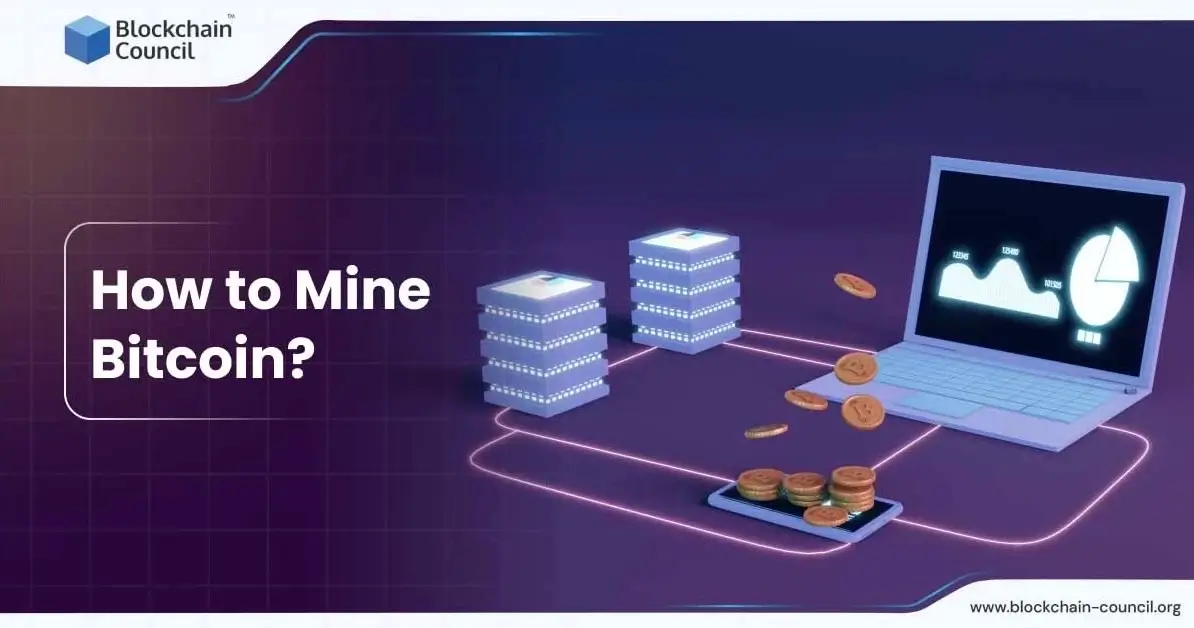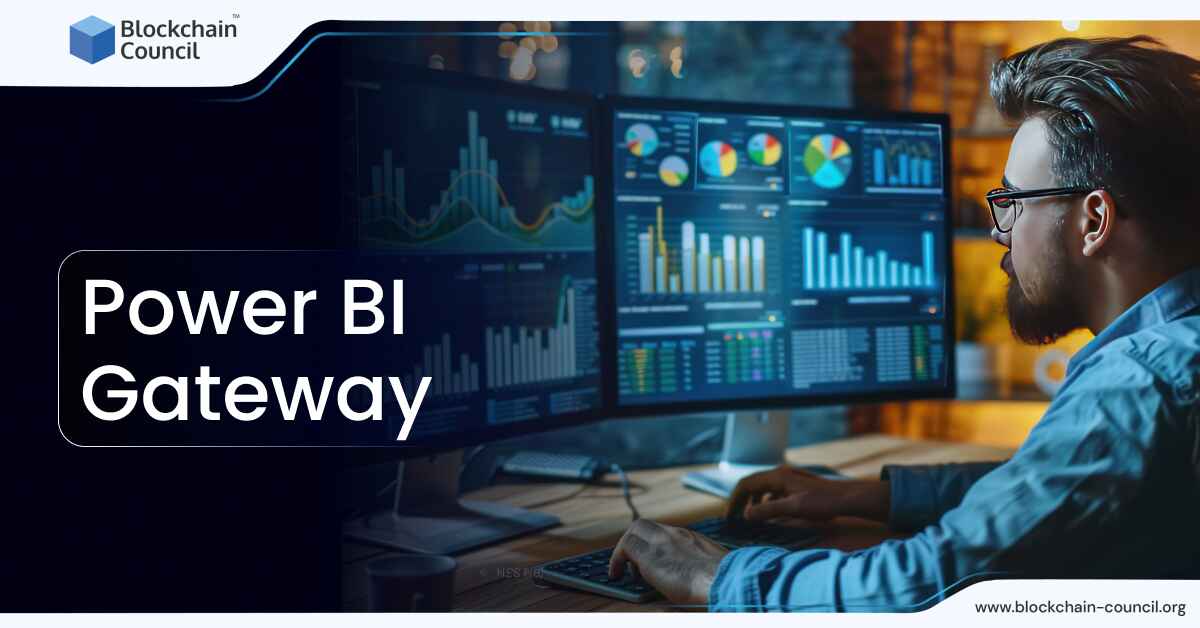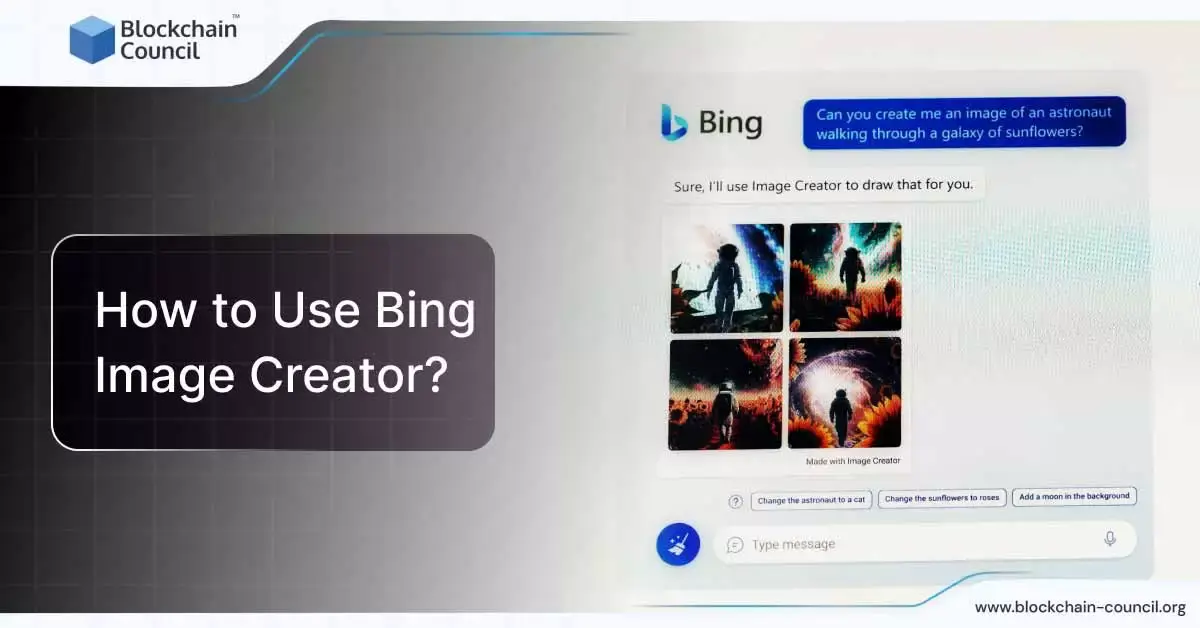
- Blockchain Council
- September 09, 2024
Mining Bitcoin is a way to earn this digital currency without directly buying it. Let’s understand what it is and how to mine Bitcoin?
What is Crypto Mining?
Crypto mining is the process of using computer power to solve mathematical problems that validate transactions on a Blockchain network. Miners get rewarded with new cryptocurrency coins for their efforts. This process ensures the security and accuracy of the network.
What is Bitcoin Mining?
Bitcoin mining is the process of creating new bitcoins by solving complex mathematical problems. Miners use powerful computers to compete in solving these problems. When a miner successfully solves one, they add a new block to the Bitcoin Blockchain and receive a reward in bitcoins. This process also helps verify and secure transactions on the network.
Discover Bitcoin Expert Certification
How to Mine Bitcoin at Home?
To mine Bitcoin at home, follow these steps:
- Get the Right Equipment: You need specialized hardware called ASICs (Application-Specific Integrated Circuits). These devices are much more efficient than regular computers for mining.
- Download Mining Software: Choose software that is compatible with your hardware. Popular options include CGMiner, BFGMiner, and EasyMiner.
- Join a Mining Pool: Mining alone is challenging because of high competition. Joining a mining pool lets you combine your efforts with other miners and share rewards.
- Set Up a Bitcoin Wallet: You’ll need a wallet to receive your mined bitcoins. Options include software wallets, hardware wallets, and online wallets.
- Start Mining: Connect your hardware, run your software, and join a pool. The software will start solving mathematical problems and earning you bitcoins.
Various Ways to Mine Bitcoin at Home
- ASIC Mining: Using ASICs is the most effective way to mine Bitcoin at home. These devices are specifically designed for mining and provide the best performance.
- GPU Mining: This involves using graphics cards to mine. It’s less efficient than ASIC mining but can be a good start for beginners who already have gaming computers.
- CPU Mining: This method uses your computer’s central processor. It’s the least efficient and not recommended for serious mining because of low profitability.
- Cloud Mining: Instead of running hardware at home, you can rent mining power from a company. This method reduces the hassle of managing equipment but requires caution to avoid scams.
Setting Up Your Mining Operation
- Choose the Right Location: Select a place with good ventilation and stable electricity. Mining equipment generates a lot of heat and noise, so a cool, quiet area is ideal.
- Buy the Necessary Equipment: Get ASIC miners for Bitcoin mining. These are the most efficient machines for the job. You also need a power supply unit (PSU), cooling fans, and possibly a dedicated mining rig frame.
- Install Mining Software: Download and install software that is compatible with your ASIC miner. Popular choices include CGMiner, BFGMiner, and EasyMiner.
- Set Up a Bitcoin Wallet: You need a wallet to store the bitcoins you mine. Choose from hardware wallets, software wallets, or online wallets based on your preference for security and convenience.
- Connect Everything: Plug in your ASIC miner, connect it to the power supply, and link it to your computer. Install the software, enter your wallet details, and configure your miner to start working.
How Much Electricity Does It Cost to Mine Bitcoin?
Mining Bitcoin consumes a lot of electricity. The exact cost depends on several factors:
- Equipment Power Consumption: ASIC miners can use anywhere from 1,200 to 3,500 watts per hour. Check the power rating of your specific device. For instance, the Bitmain Antminer S19 Pro consumes about 3,250 watts, while the MicroBT WhatsMiner M60 uses approximately 3,422 watts.
- Electricity Rates: The cost of electricity varies by location. In the U.S., rates range from $0.10 to $0.30 per kilowatt-hour (kWh). Globally, the rates can differ even more dramatically. For example, in some European countries, the cost can exceed $0.20 per kWh due to various economic and geopolitical factors.
- Operating Time: Miners typically run 24/7. To calculate the cost, multiply the power consumption of your miner by the number of hours it runs, then by your electricity rate.
For example, a miner using 1,500 watts running 24 hours a day at a rate of $0.15 per kWh would cost:
1.5kW×24h×$0.15/kWh=$5.4/day
The annual energy consumption of the Bitcoin network was estimated to be around 176 terawatt-hours (TWh) as of early 2024, which is comparable to the energy consumption of entire countries like Egypt or Poland. However, the industry is increasingly moving towards using more sustainable energy sources, with a notable share of the mining operations now powered by renewable energy
Joining a Mining Pool
- What is a Mining Pool?: A mining pool is a group of miners who combine their computational power to increase their chances of solving blocks. Rewards are shared among members based on the amount of work contributed.
- Why Join a Mining Pool?: Mining alone can be challenging and less profitable due to high competition. Pools provide more consistent payouts and reduce the variance of your earnings.
- How to Join a Mining Pool:
-
- Choose a Pool: Research and select a reputable mining pool. Factors to consider include pool fees, payout structure, and user reviews. Popular pools include Slush Pool, F2Pool, and Antpool.
- Register: Sign up on the pool’s website. Create an account and configure your miner to connect to the pool’s server. Instructions are usually provided by the pool.
- Configure Your Miner: Enter the pool’s server details, your worker ID (provided by the pool), and your wallet address into your mining software.
- Start Mining: Once configured, your miner will start working as part of the pool. Monitor your performance and earnings through the pool’s dashboard.
Bitcoin Mining Pools Explained
Bitcoin mining involves solving complex math problems to validate transactions on the Bitcoin network. As we discussed earlier, a mining pool is a group of miners who combine their computing power to increase their chances of solving these problems. When the pool successfully mines a block, the reward is shared among the members based on the amount of work each contributed. This method helps small miners compete with large-scale operations.
Security Considerations Related to Bitcoin Mining
Security is crucial in Bitcoin mining. Miners need to protect their hardware from physical threats and cyber attacks. Using strong, unique passwords for mining accounts and keeping software up-to-date can prevent unauthorized access. Additionally, miners should be wary of phishing scams and use secure internet connections. It’s also important to join reputable mining pools with good security measures in place.
Risks Involved in Bitcoin Mining
Bitcoin mining comes with several risks. The most obvious is the financial risk. The costs of electricity and hardware can be high, and the rewards might not always cover these expenses. There’s also the risk of hardware failure due to the constant, intensive use. Furthermore, Bitcoin’s price volatility can impact profitability. Miners must also consider regulatory risks, as laws around cryptocurrency can change quickly, affecting the legality and profitability of mining activities.
Conclusion
Mining Bitcoin can be rewarding, but it’s important to understand the process and the investment required. From choosing the right equipment to joining a mining pool, each step is crucial to your success. While mining can be profitable, it also comes with risks and costs, so make sure to weigh these factors carefully.
FAQs
How much does it cost to mine Bitcoin?
- Costs include purchasing specialized hardware (ASIC miners), which can range from $500 to several thousand dollars.
- Electricity costs vary by location but are significant, often ranging from $0.10 to $0.30 per kilowatt-hour (kWh).
- Ongoing costs for maintenance, cooling, and internet connectivity.
- Pool fees if you’re part of a mining pool, usually around 1-3% of your earnings.
How long does it take to mine one Bitcoin?
- The time to mine one Bitcoin depends on your hardware’s hash rate (computing power) and the total network hash rate.
- On average, it takes about 10 minutes to mine one block, which currently rewards 6.25 bitcoins (as of the 2020 halving).
- Solo mining can take a very long time due to competition; mining in a pool can provide more consistent rewards but shares them among participants.
How does Bitcoin mining work?
- Miners use powerful computers (ASICs) to solve complex mathematical problems.
- Solving these problems adds new blocks to the Bitcoin Blockchain.
- Miners receive Bitcoin rewards and transaction fees for each block they add.
- This process secures the network and verifies transactions.
Is Bitcoin mining legal?
- Bitcoin mining legality varies by country.
- Legal in many countries like the USA, Canada, and most of Europe.
- Some countries have banned or heavily regulated it, such as China and Algeria.
- Always check local regulations before starting to mine.
Is it still profitable to mine Bitcoin at home?
- Profitability depends on electricity costs, Bitcoin price, and hardware efficiency.
- High electricity costs can make mining unprofitable.
- Requires a significant initial investment in hardware.
- Joining a mining pool can increase chances of earning rewards but reduces individual earnings.
How do beginners mine bitcoins?
- Purchase an ASIC miner designed for Bitcoin mining.
- Download and install mining software compatible with your hardware.
- Set up a Bitcoin wallet to store your earnings.
- Join a mining pool to combine efforts with other miners.
- Configure your mining software with pool details and start mining.





































































 Guides
Guides News
News Blockchain
Blockchain Cryptocurrency
& Digital Assets
Cryptocurrency
& Digital Assets Web3
Web3 Metaverse & NFTs
Metaverse & NFTs
